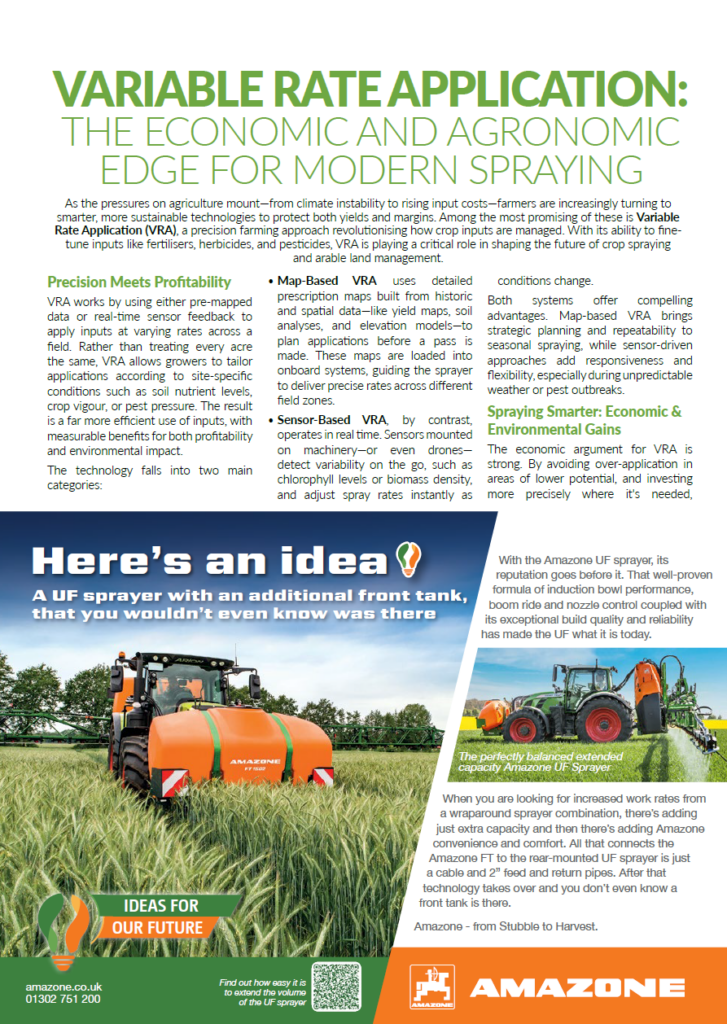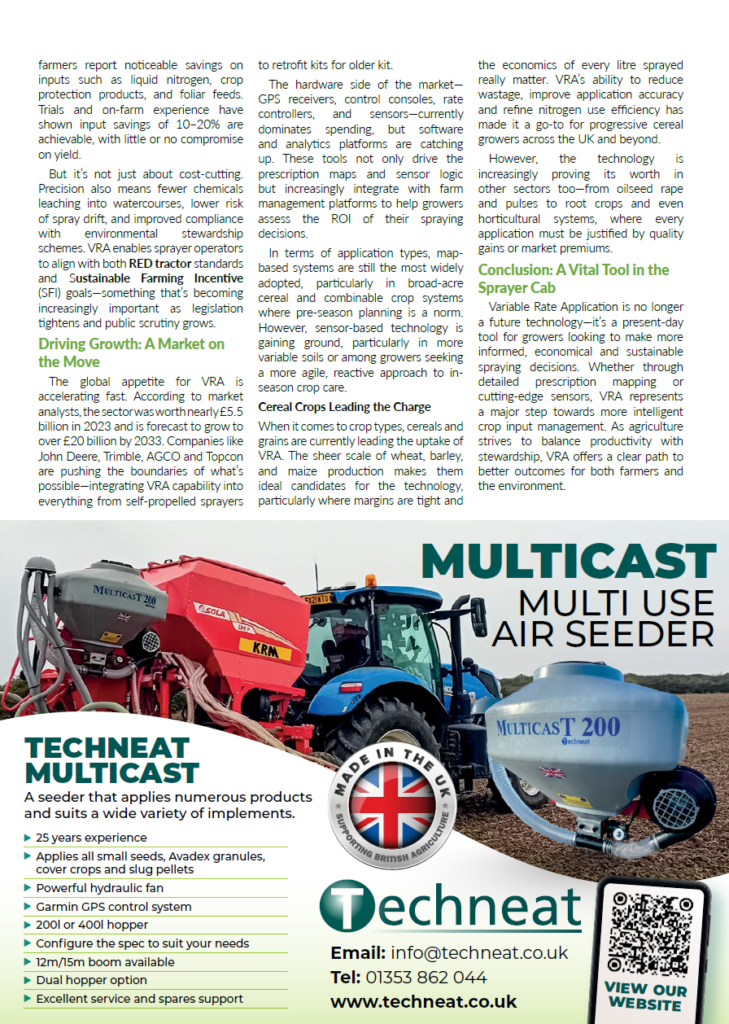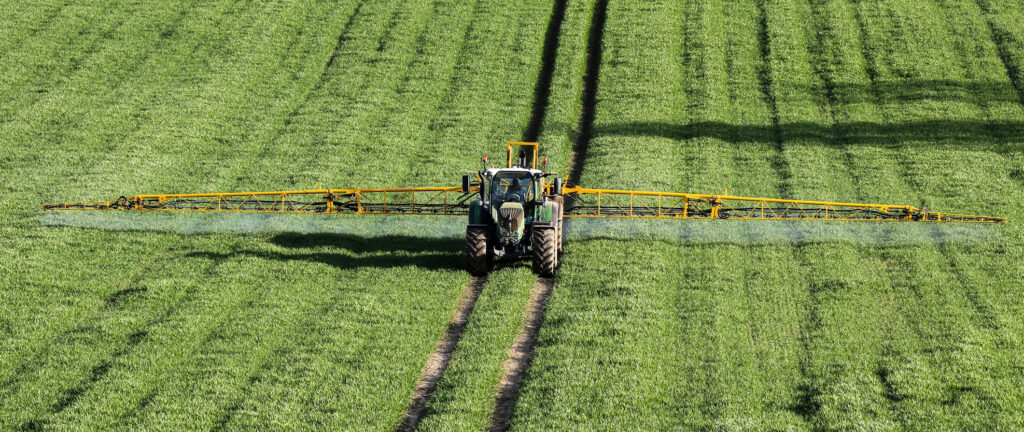As the pressures on agriculture mount—from climate instability to rising input costs—farmers are increasingly turning to smarter, more sustainable technologies to protect both yields and margins. Among the most promising of these is Variable Rate Application (VRA), a precision farming approach revolutionising how crop inputs are managed. With its ability to fine-tune inputs like fertilisers, herbicides, and pesticides, VRA is playing a critical role in shaping the future of crop spraying and arable land management.
Precision Meets Profitability
VRA works by using either pre-mapped data or real-time sensor feedback to apply inputs at varying rates across a field. Rather than treating every acre the same, VRA allows growers to tailor applications according to site-specific conditions such as soil nutrient levels, crop vigour, or pest pressure. The result is a far more efficient use of inputs, with measurable benefits for both profitability and environmental impact.
The technology falls into two main categories:
- Map-Based VRA uses detailed prescription maps built from historic and spatial data—like yield maps, soil analyses, and elevation models—to plan applications before a pass is made. These maps are loaded into onboard systems, guiding the sprayer to deliver precise rates across different field zones.
- Sensor-Based VRA, by contrast, operates in real time. Sensors mounted on machinery—or even drones—detect variability on the go, such as chlorophyll levels or biomass density, and adjust spray rates instantly as conditions change.
Both systems offer compelling advantages. Map-based VRA brings strategic planning and repeatability to seasonal spraying, while sensor-driven approaches add responsiveness and flexibility, especially during unpredictable weather or pest outbreaks.
Spraying Smarter: Economic & Environmental Gains
The economic argument for VRA is strong. By avoiding over-application in areas of lower potential, and investing more precisely where it’s needed, farmers report noticeable savings on inputs such as liquid nitrogen, crop protection products, and foliar feeds. Trials and on-farm experience have shown input savings of 10–20% are achievable, with little or no compromise on yield.
But it’s not just about cost-cutting. Precision also means fewer chemicals leaching into watercourses, lower risk of spray drift, and improved compliance with environmental stewardship schemes. VRA enables sprayer operators to align with both RED tractor standards and Sustainable Farming Incentive (SFI) goals—something that’s becoming increasingly important as legislation tightens and public scrutiny grows.
Driving Growth: A Market on the Move
The global appetite for VRA is accelerating fast. According to market analysts, the sector was worth nearly £5.5 billion in 2023 and is forecast to grow to over £20 billion by 2033. Companies like John Deere, Trimble, AGCO and Topcon are pushing the boundaries of what’s possible—integrating VRA capability into everything from self-propelled sprayers to retrofit kits for older kit.
The hardware side of the market—GPS receivers, control consoles, rate controllers, and sensors—currently dominates spending, but software and analytics platforms are catching up. These tools not only drive the prescription maps and sensor logic but increasingly integrate with farm management platforms to help growers assess the ROI of their spraying decisions.
In terms of application types, map-based systems are still the most widely adopted, particularly in broad-acre cereal and combinable crop systems where pre-season planning is a norm. However, sensor-based technology is gaining ground, particularly in more variable soils or among growers seeking a more agile, reactive approach to in-season crop care.
Cereal Crops Leading the Charge
When it comes to crop types, cereals and grains are currently leading the uptake of VRA. The sheer scale of wheat, barley, and maize production makes them ideal candidates for the technology, particularly where margins are tight and the economics of every litre sprayed really matter. VRA’s ability to reduce wastage, improve application accuracy and refine nitrogen use efficiency has made it a go-to for progressive cereal growers across the UK and beyond.
However, the technology is increasingly proving its worth in other sectors too—from oilseed rape and pulses to root crops and even horticultural systems, where every application must be justified by quality gains or market premiums.
Conclusion: A Vital Tool in the Sprayer Cab
Variable Rate Application is no longer a future technology—it’s a present-day tool for growers looking to make more informed, economical and sustainable spraying decisions. Whether through detailed prescription mapping or cutting-edge sensors, VRA represents a major step towards more intelligent crop input management. As agriculture strives to balance productivity with stewardship, VRA offers a clear path to better outcomes for both farmers and the environment.


